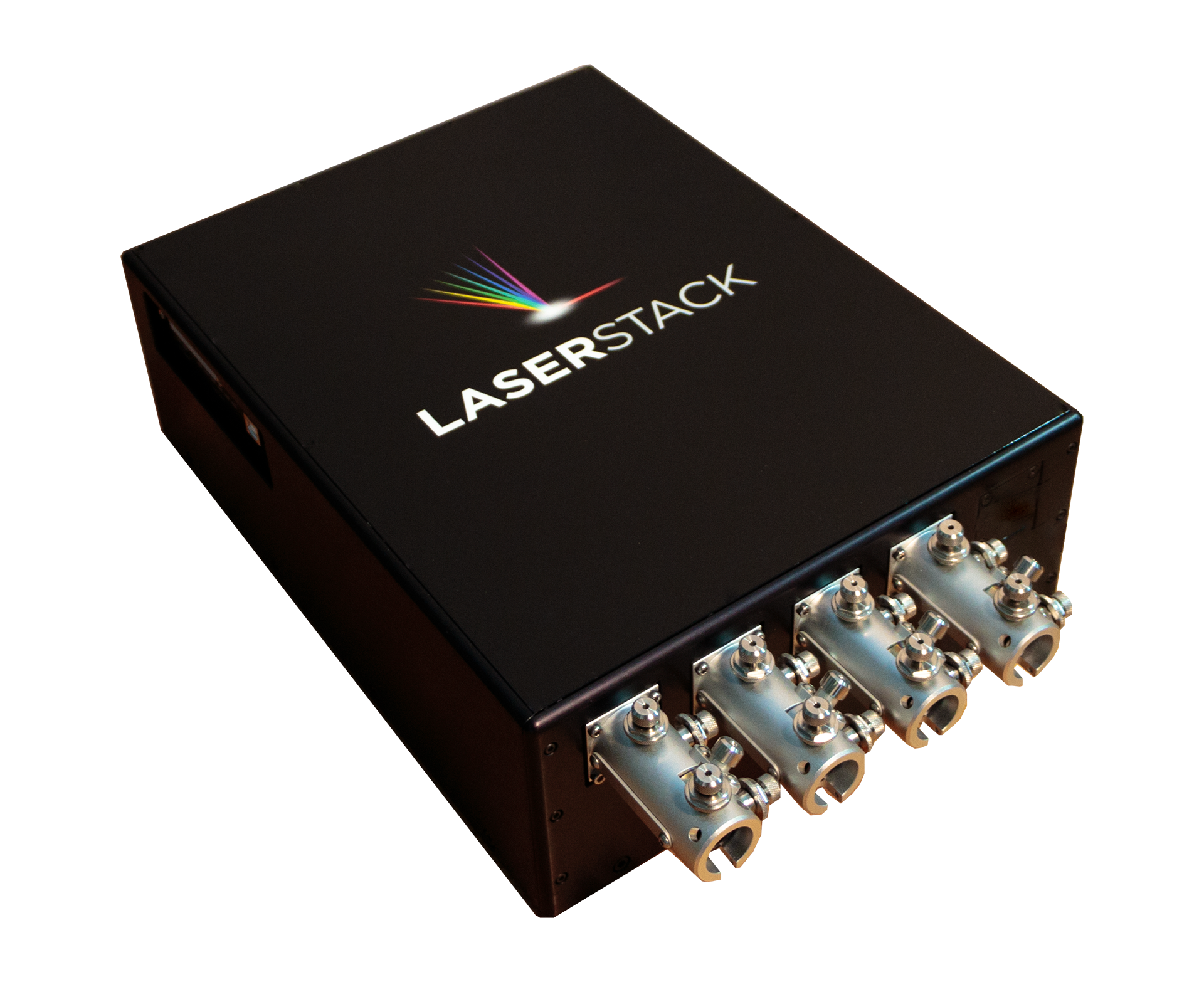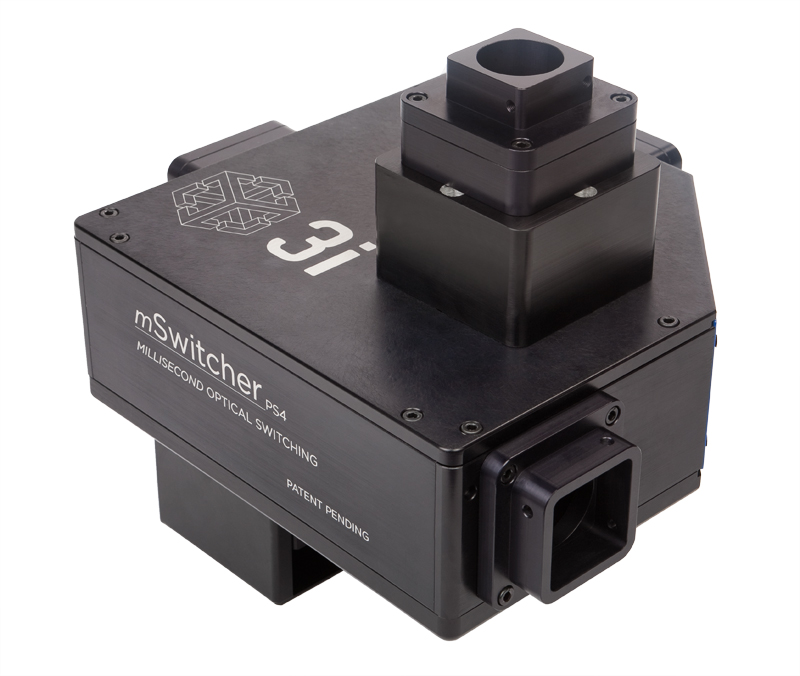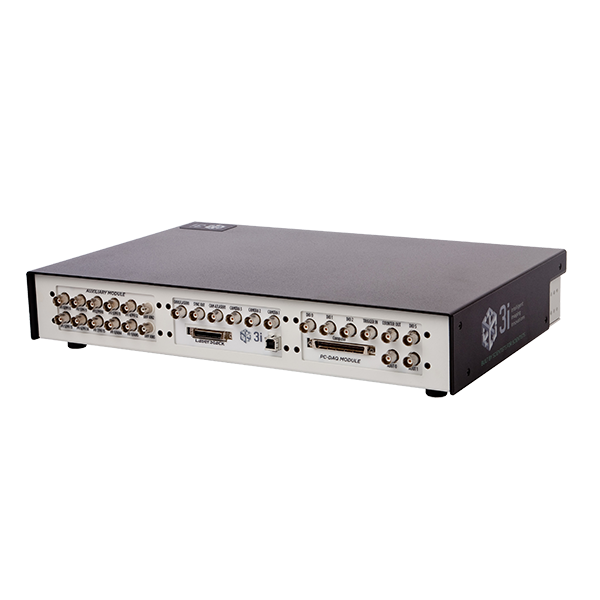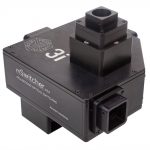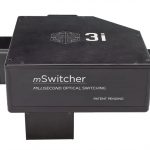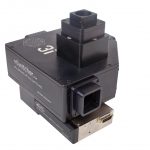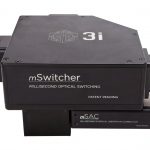LaserStack
LaserStack is a laser launch system combining the output from a selection of solid state diode lasers and coupling them to a microscope via fiber optic. High-speed imaging is enabled by on/off times and wavelength change times on the order of tens of microseconds. Laser lines can be custom selected and combined to meet any research need and the modular design readily allows for future expansion.
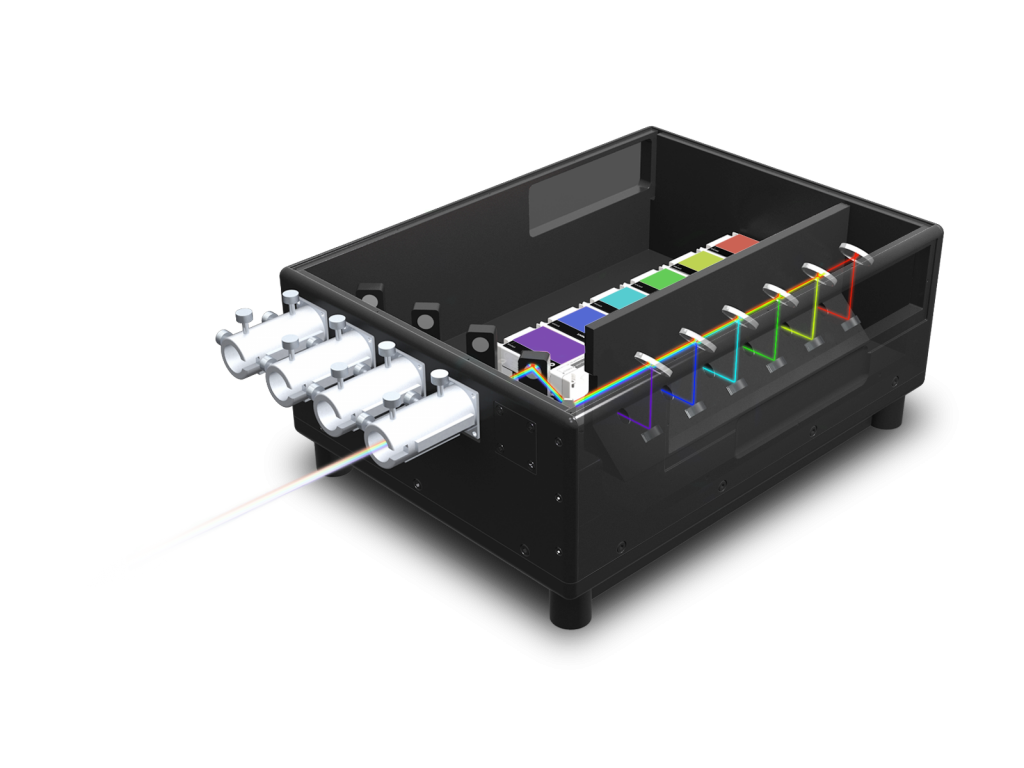
Available Lasers
Highest quality single mode optical fibers allow coupling of any combination of the following wavelengths to the microscope, either singly or in any combination:
LaserStack 405nm – 50mW, 100mW, 140mW, 200mW
LaserStack 445nm – 75mW, 100mW
LaserStack 473nm – 75mW
LaserStack 488nm – 20mW, 50mW, 100mW, 150mW
LaserStack 514nm – 4omW, 100mW
LaserStack 561nm – 20mW, 50mW, 100mW, 150mW
LaserStack 594nm – 60mW, 100mW
LaserStack 640nm – 40mW, 100mW, 120mW, 140mW
LaserStack 660nm – 100mW
Rapid switching between devices
The optional LaserStack FiberSwitcher™ allows sub-millisecond changing between up to four illuminating devices via a high-speed galvo-driven mirror. FiberSwitcher can rapidly toggle laser output between such devices as:
Spinning Disk Confocal – CSU-X1 or CSU-W1
VectorTIRF – Motorized spinning X,Y TIRF system for large-field, even TIRF illumination
Vector™ – high-speed point scanner for FRAP and other photomanipulation techniques
Phasor™ – SLM based digital holography illuminator for 3D photostimulation and other photomanipulation techniques
FLIM – frequency based fluorescence lifetime imaging for quantitative fluorescence measurements
Frequency Domain FLIM
LaserStack can integrate lasers with MHz modulation for frequency domain FLIM in combination with a modulated intensified camera and the SlideBook FLIM module.
LaserStream™
LaserStream can change the output wavelength from LaserStack with each camera exposure. Users can program LaserStream to select laser illumination in any combination or pattern they choose, limited in speed only by the exposure time of the camera.
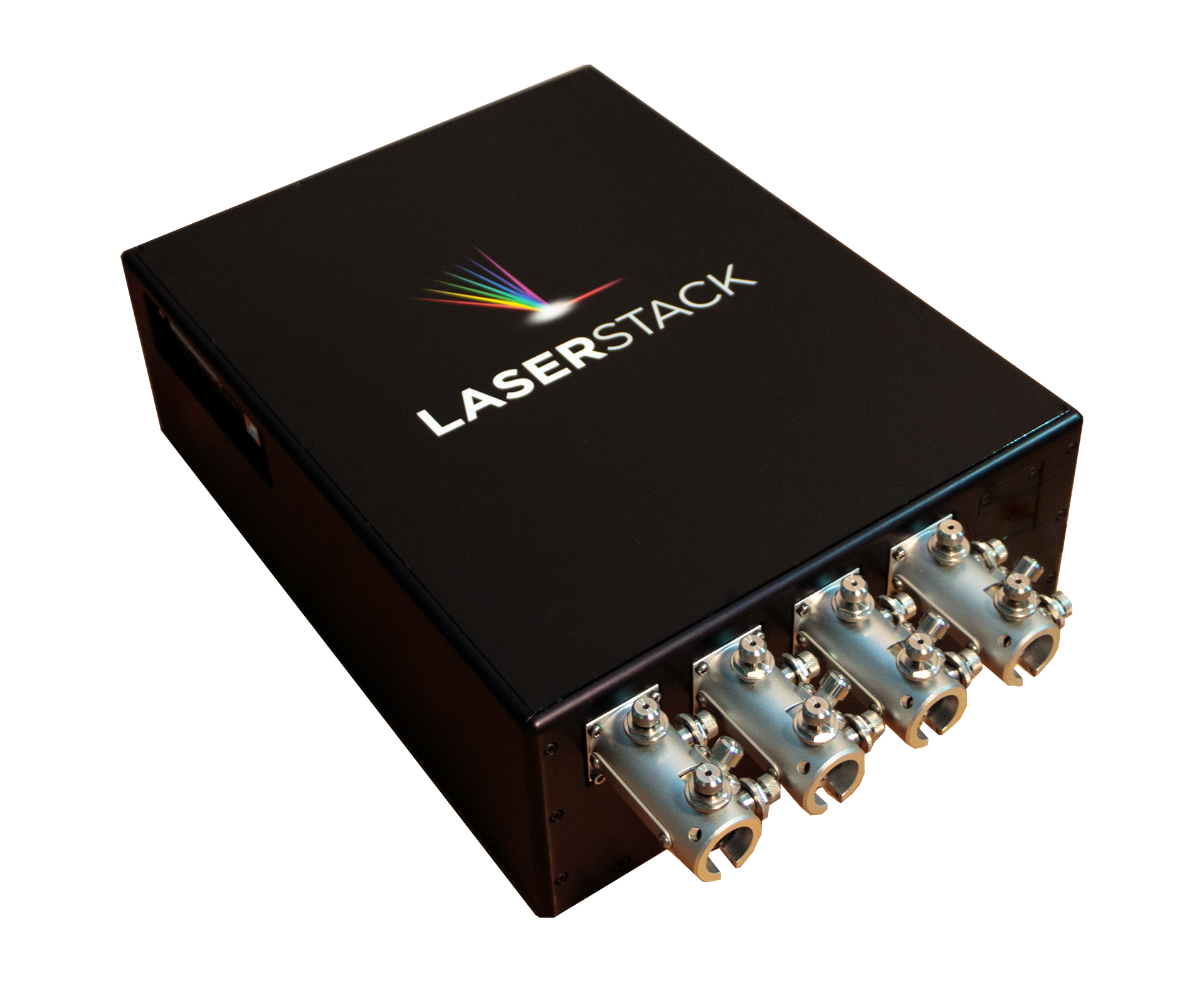
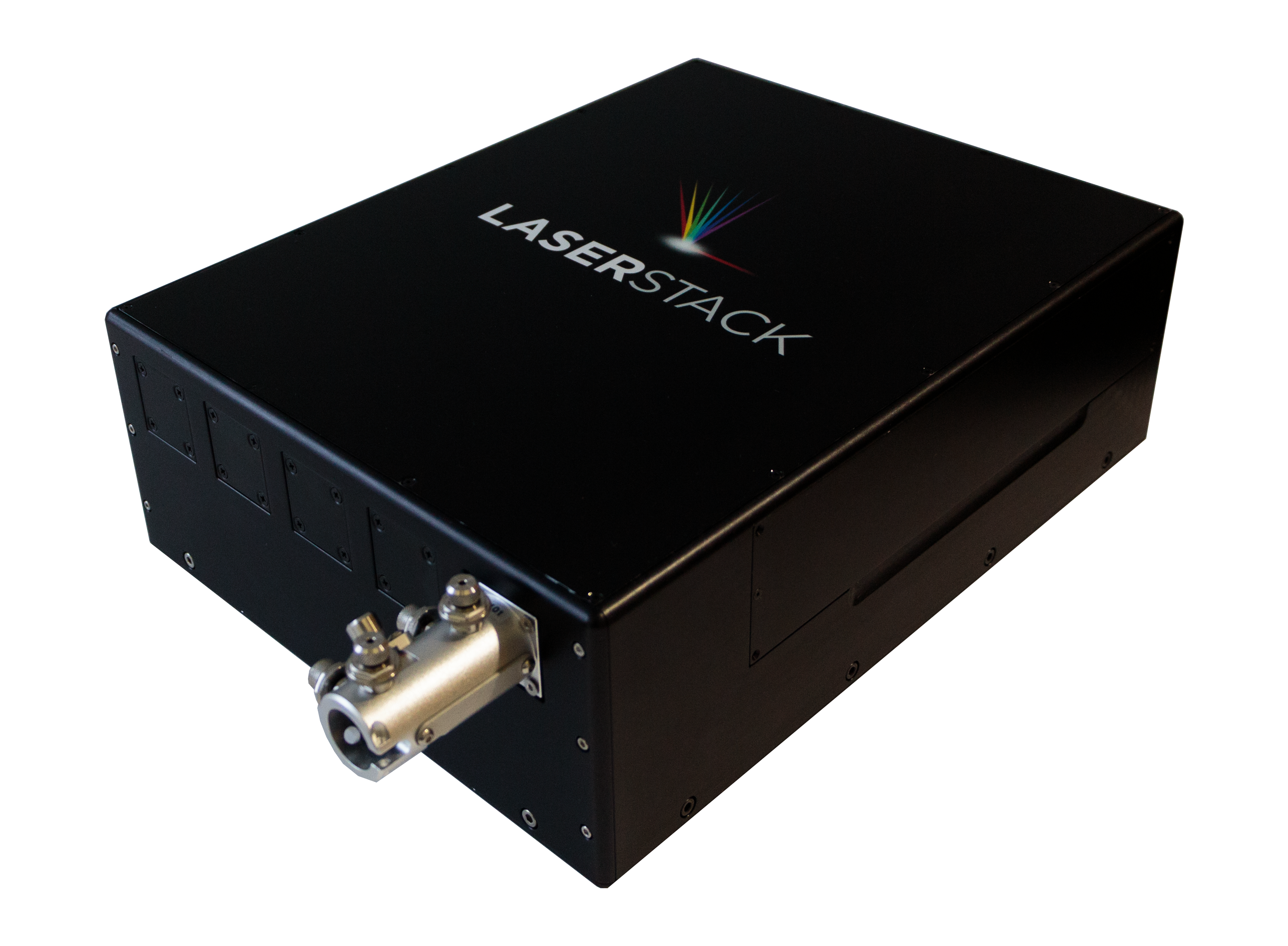
3i LaserStack with up to four outputs
mSwitcher
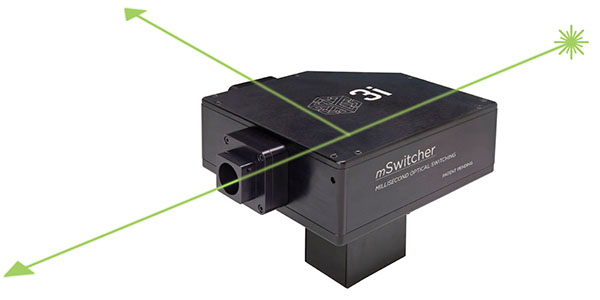
The 3i mSwitcher high speed galvo port switcher allows rapid, 1ms selection of three optical output (or three input) paths for one input (output). This enables direct combination of multiple devices and methods.
mSAC
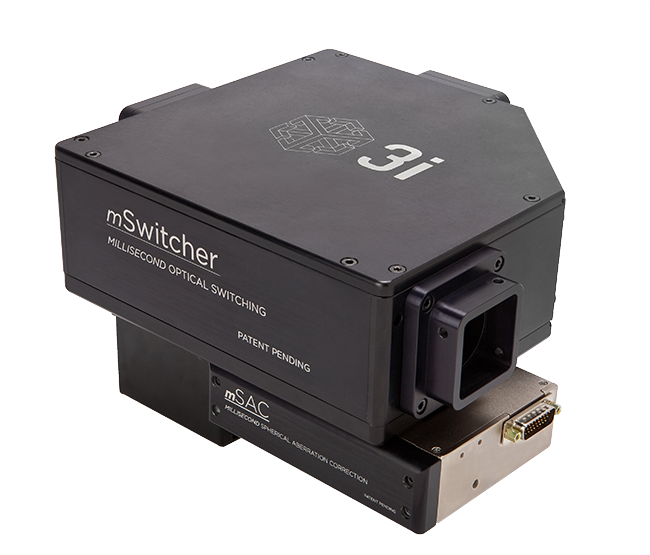
Spherical aberration (SA) is the most serious monochromatic defect that occurs with microscope objectives. Indeed, SA is the limiting physics for most of 3-D microscopy. SA causes the image to appear blurry with less contrast. SA is generated when there is material with a different refractive index than the lens designer’s specification between the front of the objective and the image plane. Typically, SA becomes more serious as one focuses deeper into samples.
mSAC Data with Confocal
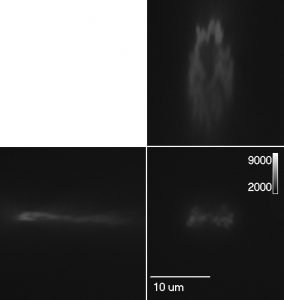
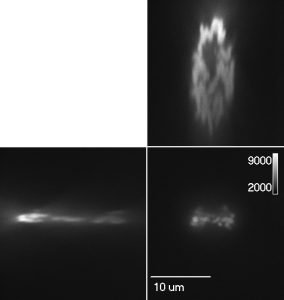
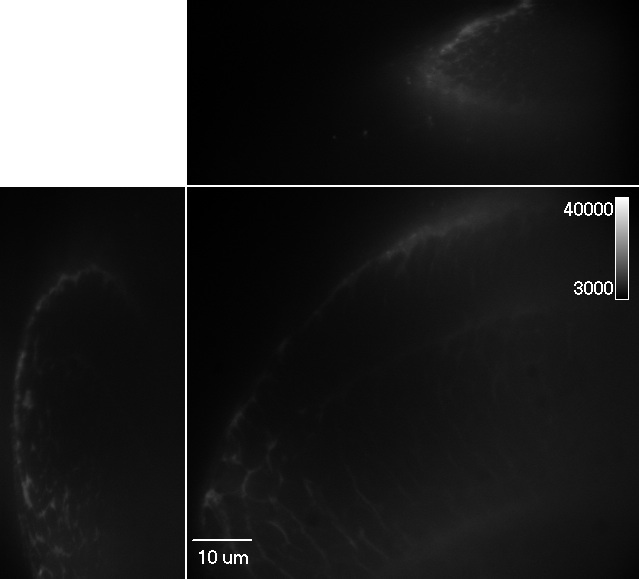
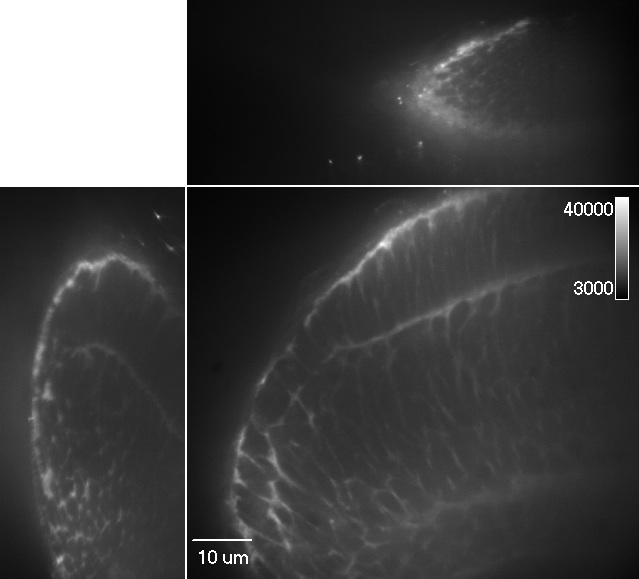
Living samples (GFP Histones) imaged with a 63x 1.4 NA oil objective, SAC technology and a spinning disk confocal: Neutral SAC (left) and Rolling SAC (right).
GFP Mouse Embryo 100µm, imaging distance, 40x objective with Neutral SAC (left) and Rolling SAC (right).
TTL Sync
TTL Synchronization (TTL Sync) provides sophisticated electronic control of carefully timed devices in a microscopy system. In combination with SlideBook software, TTL Sync can both create and receive triggering signals from a variety of devices and orchestrate their cooperative function throughout an experiment. Timing that is simply not achievable through standard USB and serial connection to a PC is made possible by custom circuitry operating independently of but in cooperation with the computer and operating system.
At a basic level, TTL Sync provides software control of analog/digital I/O boards, utilizing them to direct a variety of signals via TTL and other methods. Key to this functionality is pulse generation and recording. This module can also be used to synchronize external stimulation and data collection instruments, such as electrodes, patch clamp recording devices, and perfusion systems.
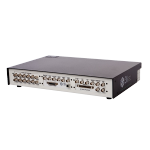
Connector-side of
TTL Synchronization with
LaserStack input.
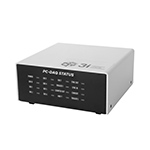
Connector-side of the small
Synchronization module.
Bifurcator
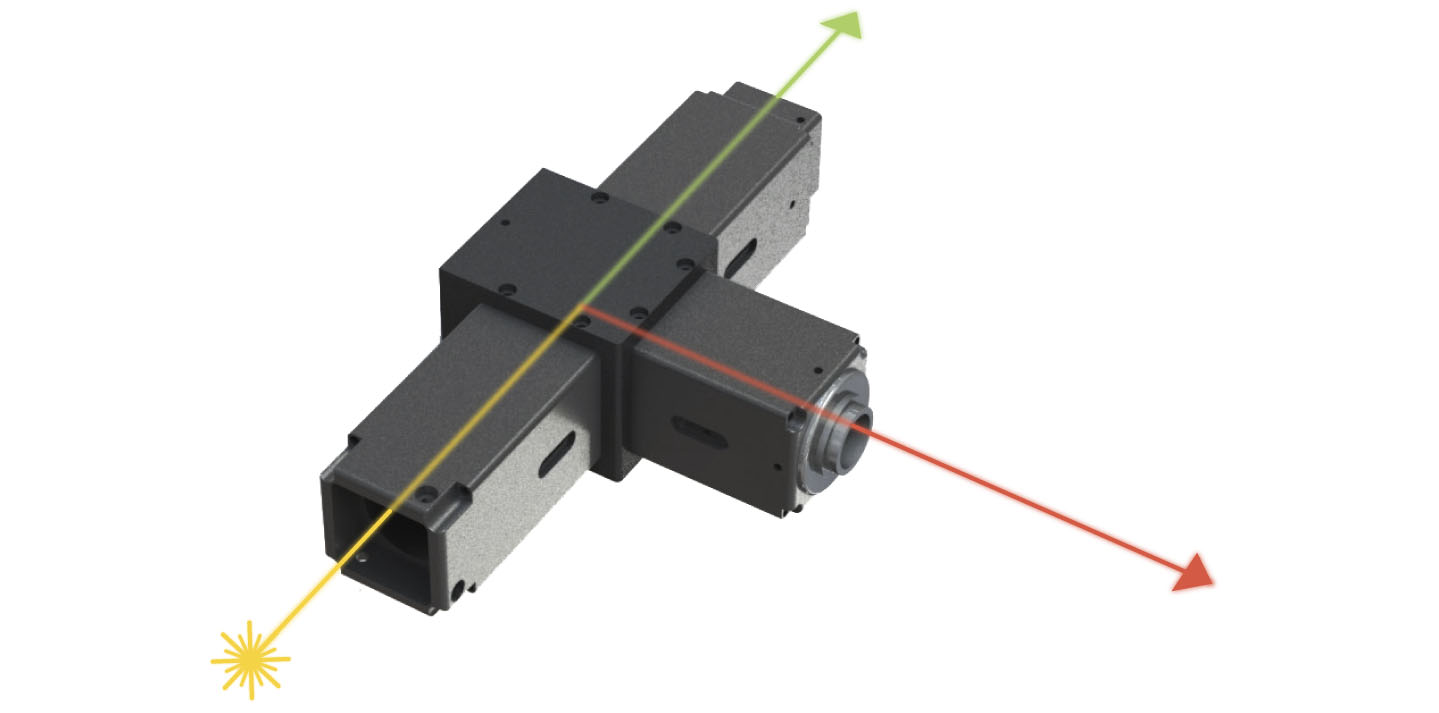
Bifurcator™ can be both an optical splitter and a signal combiner, providing spectral separation or combination in a perfect image relay.
An exchangeable dichromatic mirror, precision alignment of each port, and the ability to combine 1.0x and 1.2x magnifications makes this a practical and powerful imaging tool.
Optimizer
Optimizer™ creates a perfect image relay for optimal positioning of emission filter wheels in a collimated infinity space.
Magnification can be chosen as either 1.0x or 1.2x to match various detectors.
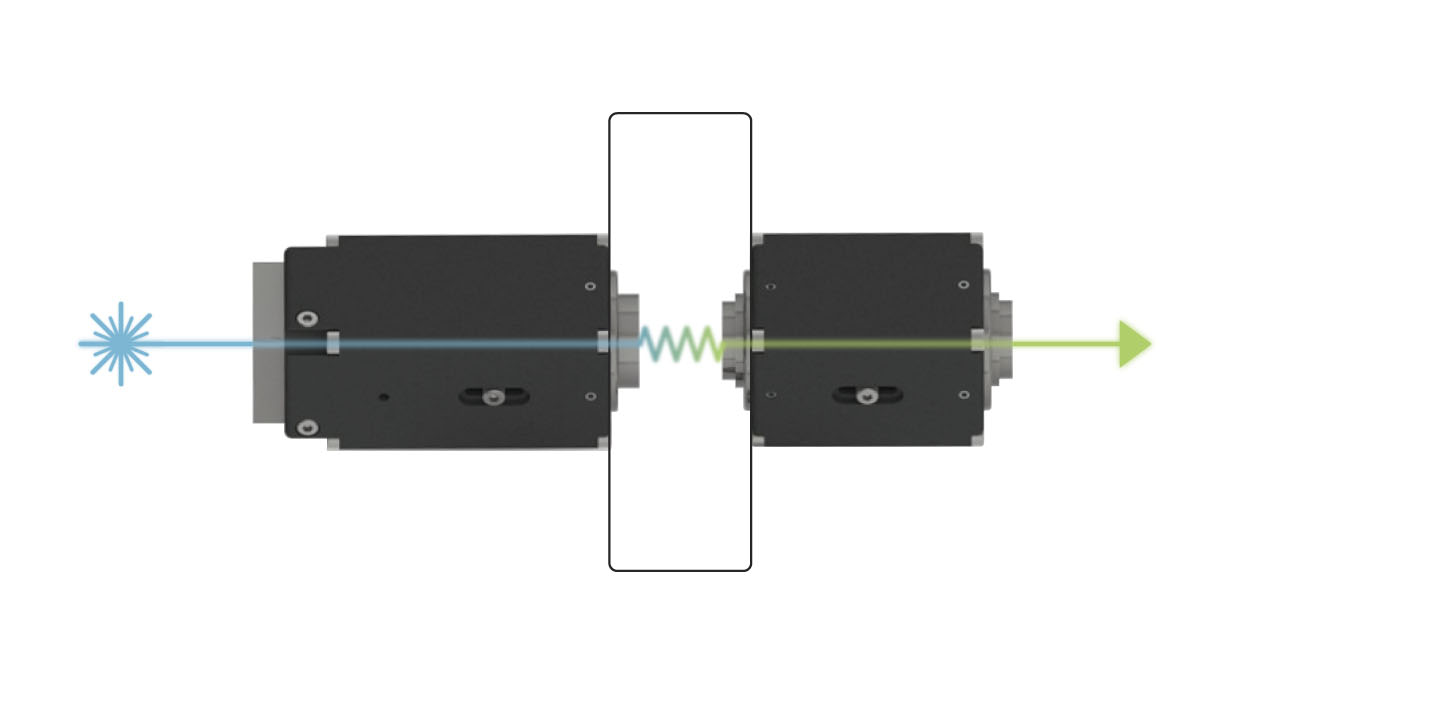
DeMuxer
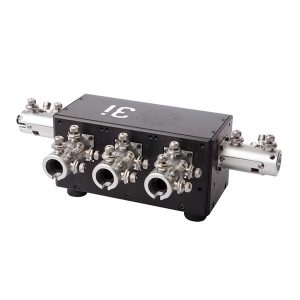
The DeMuxer allows separation of the individual laser lines from a LaserStack laser launch. Individual signals can then be sent to any device requiring a single wavelength such as the inputs on an Olympus cell^TIRF™ system.


